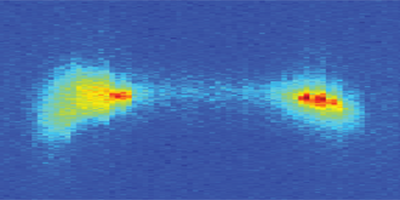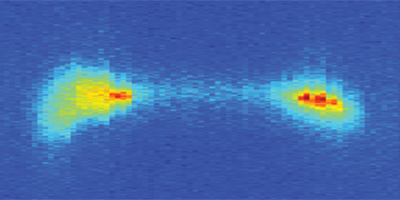A Cooper-Pair Laser
When a single emitter (like an atom, a molecule, or a quantum dot) is placed inside a high-quality microcavity, the strong coupling between the emitter and the cavity can be exploited to realize lasers that are remarkably different from conventional ones. Such single-emitter lasers can be extremely compact, require little power to operate, and generate nonclassical states of light, such as single or entangled photons. As reported in a Rapid Communication in Physical Review B, a research team led by Alex Rimberg at Dartmouth College, New Hampshire, has built and tested a new single-emitter laser consisting of a superconducting circuit embedded in a microwave cavity.
The scheme is based on a Cooper-pair transistor (CPT): a small superconducting island with source and drain electrodes through which Cooper pairs (the carriers of superconductivity) can tunnel, depending on the voltage applied to a third electrode (the gate). A dc voltage between the source and drain generates, through the ac Josephson effect, an ac voltage at microwave frequencies, acting like an antenna that inputs microwave photons into the cavity. When the photons’ frequencies match the cavity’s resonant frequencies, the researchers observe the buildup of a large number of microwave photons and a 1-order-of-magnitude narrowing of the emission linewidth. These two effects suggest the device is lasing: in a stimulated emission process, the microwave photons stimulate the tunneling of a Cooper pair, which in turn creates new photons at the same frequency. The photons get amplified in multiple round trips in the cavity, realizing a laser’s feedback loop.
The authors argue the device is particularly suitable to generate “amplitude-squeezed” light, which has reduced intensity fluctuations compared to conventional lasers—a property useful for high-precision measurements and quantum communication protocols. – Matteo Rini





